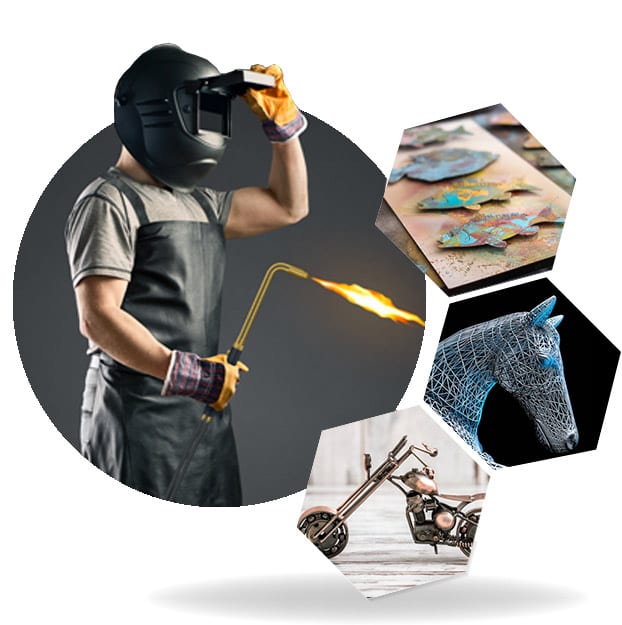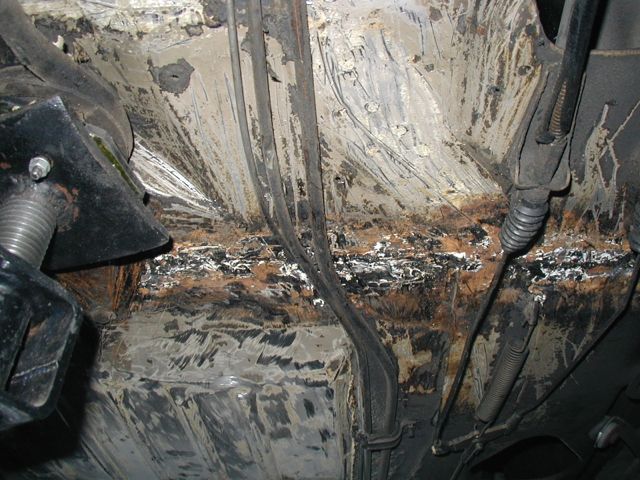Essential weld defect solutions from Montana Mobile Welding and Repair Belgrade Welding
Common Welding Repair Issues and Exactly How to Address Them Successfully
Welding repair work usually come across a variety of issues that can endanger the stability of the end product. Usual issues consist of inadequate penetration, porosity, and misalignment, among others. Each flaw presents unique difficulties that call for certain approaches for resolution. Understanding these concerns is crucial for welders aiming to improve their end results and abilities. This conversation will explore these typical welding fixing problems and effective techniques to address them.
Insufficient Infiltration
Inadequate penetration takes place when the weld steel falls short to fully fuse with the base material, resulting in weak joints and prospective structural failings. This concern often stems from not enough warm input, wrong electrode angle, or inappropriate welding speed. Welders might run into inadequate infiltration due to a mistake of the essential parameters for a details material density or type. Furthermore, contamination on the base product's surface can hinder effective bonding, aggravating the trouble. To deal with inadequate infiltration, welders need to ensure proper settings on their equipment and keep a clean work surface area. Normal assessment of welds is advised to determine any deficiencies early, enabling for prompt adjustments and the avoidance of jeopardized architectural stability in bonded assemblies.
Porosity
Porosity is a common defect in bonded joints that shows up as tiny gas bubbles entraped within the weld metal. This flaw can compromise the honesty of the weld, resulting in lowered strength and prospective failing under tension. Welding. Porosity normally develops from contamination, wetness, or inappropriate welding strategies, which allow gases to get away right into the liquified weld pool. To attend to porosity, welders must guarantee appropriate surface area prep work, keep a tidy workplace, and utilize ideal welding parameters. In addition, choosing the ideal filler product and shielding gas can minimize gas entrapment. Normal evaluation and testing of welds can aid determine porosity early, assuring prompt rehabilitative actions are taken, thereby maintaining the top quality and reliability of the welded framework
Imbalance
Imbalance in welding can emerge from various factors, including improper arrangement and thermal expansion. Comprehending the source is essential for reliable resolution. Numerous adjustment techniques are readily available to straighten parts and assure structural integrity.
Root causes of Imbalance
Welding imbalance usually stems from a selection of underlying issues that can compromise structural stability. One main cause is improper fit-up of elements prior to welding, which can cause voids and unequal surface areas. Variations in thermal development throughout the welding procedure can likewise lead to distortion, particularly if the products being signed up with have different coefficients of development. In addition, insufficient fixturing and clamping may fail to hold elements firmly in position, causing motion throughout welding. Inadequately maintained equipment, including welding makers and tools, might present disparities in the weld bead, more contributing to imbalance. Operator mistake, stemming from inadequate training or experience, can also play a significant duty in developing misaligned welds.

Correction Strategies Readily Available
Attending to imbalance properly calls for a combination of corrective methods tailored to the details problems available. One typical method is using jigs or fixtures to hold components in the proper position throughout welding, making certain constant placement. Additionally, preheating the materials can assist decrease distortion and improve fit-up. For significant misalignment, mechanical adjustment techniques, such as making use of hydraulic jacks or clamps, can be employed to fix the placement prior to welding. Post-weld warm therapy may likewise be needed to soothe stresses triggered by misalignment. Finally, cautious examination and adjustment during the configuration phase can stop imbalance concerns from coming to be considerable troubles, advertising a smoother welding procedure and improving overall architectural honesty.
Distortion
Distortion is a typical obstacle in welding that can arise from different elements, consisting of uneven home heating and cooling. Recognizing the reasons of distortion is crucial for carrying out reliable avoidance techniques. Resolving this issue not just boosts architectural integrity but additionally enhances the total top quality of the weld.
Root causes of Distortion
When based on the intense heat of welding, products often undertake adjustments that can bring about distortion. This sensation mostly arises from thermal expansion and tightening throughout the welding procedure. As the weld location warms up, the material increases; upon air conditioning, it acquires, which can create interior stresses. In addition, irregular home heating throughout a workpiece can aggravate these anxieties, causing warping or flexing. The kind of material likewise plays a significant role; metals with differing thermal conductivity and coefficients of growth might respond in different ways, bring about uncertain distortions. Furthermore, bad joint style and inadequate fixturing can add to imbalance during welding, raising the chance of distortion. Comprehending these causes is essential for effective welding fixing and prevention approaches.
Prevention Techniques
Efficient avoidance methods for distortion during welding emphasis on controlling warmth input and making sure appropriate joint design. Maintaining a regular Get More Info heat input helps to minimize thermal expansion and contraction, which can cause distortion. Making use of methods such as pre-heating the workpiece can likewise reduce the temperature gradient, advertising consistent heating. In addition, selecting appropriate joint layouts, such as T-joints or lap joints, can improve security and lower stress and anxiety concentrations. Implementing proper fixturing to safeguard the workpieces in area further aids in preserving placement throughout the welding procedure. Lastly, staggered welding sequences can disperse warm a lot more equally, stopping local distortion. By using these approaches, welders can greatly lower the likelihood of distortion and improve the overall top quality of their welds.
Breaking
Fracturing is an usual concern encountered in welding fixings, commonly resulting from various variables such as incorrect cooling rates, material selection, or poor joint prep work. The occurrence of fractures can considerably jeopardize the honesty of the weld, bring about potential failures throughout operation. To resolve this issue, welders need to first evaluate the origin, guaranteeing that products work and suitably chosen for the particular application. Furthermore, managing the cooling rate during the welding process is important; rapid cooling can generate anxiety and cause breaking. Appropriate joint layout and preparation additionally contribute to reducing the threat. Executing these techniques can improve weld quality and sturdiness, ultimately reducing the possibility of cracking in completed weldments.

Incomplete Combination
A substantial problem in welding repair services is incomplete blend, which happens when the weld metal does not appropriately bond with the base material or previous weld passes - Montana Mobile Welding and Repair Fabrication. This problem can lead to weak points in the joint, potentially jeopardizing the integrity of the welded framework. Aspects contributing to insufficient blend include insufficient warmth input, inappropriate welding method, and contamination of the surfaces being signed up with. To resolve this problem efficiently, welders must assure correct pre-weld cleansing and surface area preparation, as well as readjust their welding specifications to achieve adequate penetration and blend. Regular inspection during the welding process can likewise assist determine insufficient blend early, enabling for timely rehabilitative procedures to enhance the general quality of the weld
Overheating
While welding repairs can enhance architectural integrity, overheating offers a significant challenge that can result in product destruction. Too much warm during welding can alter the mechanical my website homes of metals, leading to lowered stamina, boosted brittleness, and bending. This sensation is especially important in high-stress applications where architectural dependability is critical. Determining overheating can involve visual examinations for staining or distortion, in addition to monitoring temperature level throughout the welding process. To alleviate the threats connected with overheating, welders should employ appropriate methods, such as managing warm input, changing traveling rate, and making use of appropriate filler materials. Additionally, executing pre- and post-weld heat therapies can help recover material properties and boost the total high quality of the repair work, guaranteeing long-lasting performance and safety.
Often Asked Questions
What Are the Common Indications of a Welding Problem?

How Can I Evaluate My Welds for Top quality?
To examine welds for high quality, one can make use of aesthetic inspections, ultrasonic screening, and radiographic approaches. Each technique assures structural honesty, determines flaws, and validates adherence to specified standards, ultimately improving the dependability of the welded joints.
What Safety Precautions Should I Take While Welding?
When welding, one should prioritize safety and security by wearing appropriate individual safety tools, ensuring appropriate ventilation, securing flammable materials away, maintaining a clean workspace, and being mindful of surroundings to avoid injuries and mishaps.
Can I Fix a Weld Without Redesigning the Entire Joint?
Repairing a weld without renovating the entire joint is feasible, relying on the damages (Welding). Techniques such as grinding, adding filler product, or making use of a welding process can efficiently resolve certain imperfections while preserving the surrounding structure
What Equipment Are Necessary for Efficient Welding Repairs?
Important tools for reliable welding repairs include a welding device, cord brush, mill, protective equipment, clamps, and site here filler products. Each tool plays an important function in ensuring quality and safety during the repair service procedure. Porosity usually develops from contamination, moisture, or improper welding strategies, which enable gases to leave right into the molten weld pool. Improperly maintained tools, including welding makers and tools, might introduce variances in the weld bead, more adding to misalignment. When subjected to the extreme warm of welding, products frequently go through modifications that can lead to distortion. Cracking is a common issue experienced in welding repair services, usually resulting from numerous variables such as inappropriate air conditioning rates, material choice, or poor joint preparation. A substantial concern in welding fixings is insufficient blend, which takes place when the weld steel does not adequately bond with the base product or previous weld passes.